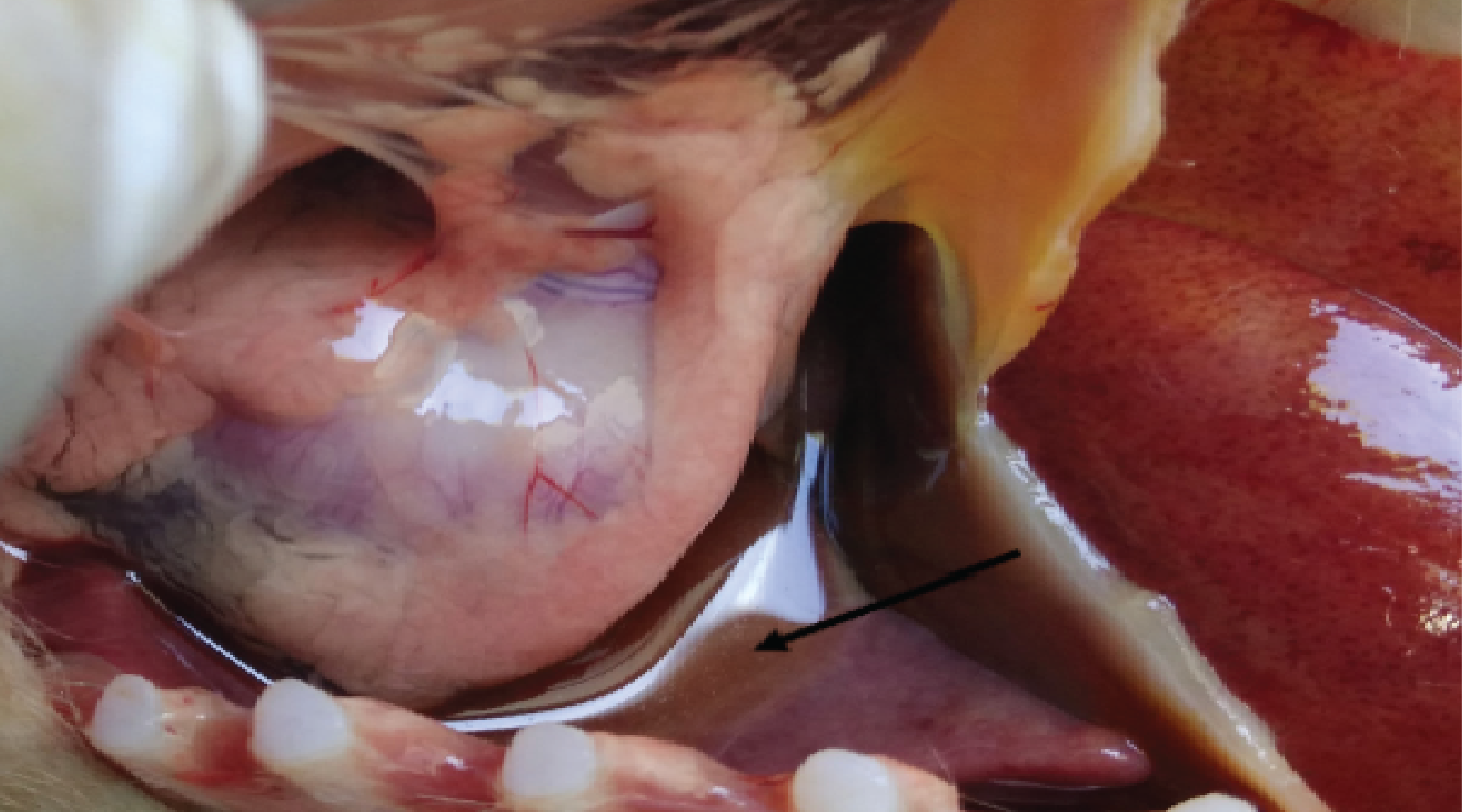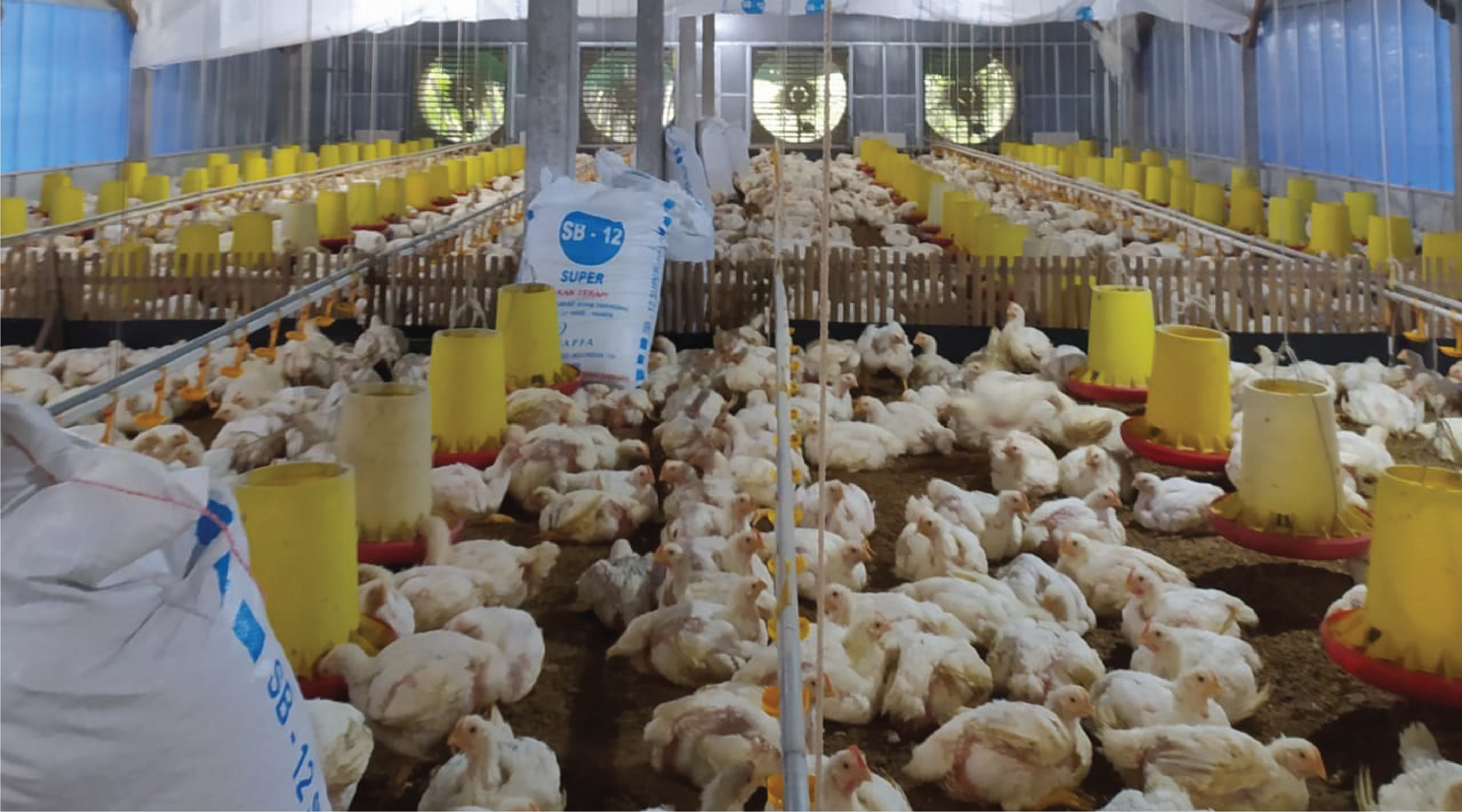The Incidence of Helminthiasis in Cattle in The Work Area of UPT. Laboratorium Kesehatan Hewan in East Java Province in 2017-2018
Downloads
Background: The needs of Indonesian people for animal protein from meat are still quite high, but the fulfillment of meat demand has not been sufficient. Many obstacles faced by farmers in developing their livestock business, one of which is helminthiasis. Helminth infections can occur due to feed problems or poor maintenance management. Helminth infestation in the digestive tract can cause intestinal mucosal damage, which can reduce the efficiency of food absorption, causing livestock productivity losses in body weight, milk production, quality of meat, skin, and innards. Purpose: This study aimed to determine the prevalence of helminthiasis and the type of helminths that infected cattle in UPT. Laboratorium Kesehatan Hewan Provinsi Jawa Timur.Method: This study used sedimentation and Whitlock floating method.Result: The highest prevalence in 2017 occurred in Tuban City, which was 6,69%, while the lowest was in Gresik Regency, which was 0%. Whereas in 2018, the highest prevalence occurred in Lamongan City, which was 9,42% and the lowest prevalence in Ngawi Regency, which was 0,22%. The type of helminth that infects the cattle the most in 2017 is Fasciola sp.as many as 114 cases, with the highest number occurring in Magetan Regency, which was 44 cases. In 2018, Fasciola sp.also the most common type of helminth found to infect cattle in 202 cases, with the highest number occurring in Magetan and Pacitan Regency, which was 34 cases.
Animut, G., Goetsch, A.I., Aiken, G.E., Puchala, R., Detweiler, G., Krehbiel, C.R., Merkel, R.C., Sahlu, T., Dawsin. L.J. 2005. Grazing behavior and energy expenditure by sheep and goats cograzing grass forb pastures at three stocking rates. Small Ruminant Research Vol. 59 (2-3). Pp: 191-201
Bowman, D. D., Georgi, J. R.. 2009. Georgi's Parasitology for Veterinarians. Elsevier Health Sciences. United Kingdom.
Direktoral Jendral Bina Produksi Peternakan. 2016. Statistik Peternakan tahun 2016. Departemen Pertanian, Jakarta.
Dhewiyanti, V., Setyawati, T. R., Ari, H.Y. 2015. Prevalensi dan Intesitas Larva infektif Nematoda Gastrointestinal Strongylida dan Rhabditida pada Kultur Feses Kambing (Capra sp.) di Tempat Pemotongan Hewan Kambing Pontianak. Protobiont Vol.4(1). Pp: 178-183
Koesdarto, S., Subekti, S., Mumpuni, S., Puspitawati, H., Kusnoto. 2007. Buku Ajar Ilmu Penyakit Nematoda Veteriner. Fakultas Kedokteran Hewan. Universitas Airlangga. Surabaya.
Levine, N. D. 1994. Parasitologi Veteriner. Diterjemahkan oleh Ashadi G. Dari Textbook of Veterinary Parasitology. Yogyakarta: Gadjah Mada University Press.
Mubarok, S., Suratma, N.A., Dwinata, I.M. 2015. Prevalensi Trematoda di Sentra Pembimbitan Sapi Bali Desa Sobangan, Kecamatan Mengwi, Kabupaten Bandung. Indonesia Medicus Veterinus Vol.4(1). Pp:48-53
Mulyadi, T., Siswanto, Hartono, M. 2017. Cacing Saluran Pencernaan Pada Kambing Peranakan Etawa (PE) di Kelompok Tani Kecamatan Gedog Tataan Kabupaten Pesawaran Lampung. Jurnal Riset dan Inovasi Peternakan Vol.2(2). Pp: 21-26
Rumiyani, T., Hamdani, M.D.I. 2017. Status Sosial Ekonomi Peternakan Kambing Peranakan Etawa (PE) di Desa Sungai Langka, Kecamatan Gedong Tataan, Kabupaten Pesawaran Provinsi Lampung. Jurnal Ilmiah Peternakan Terpadu Vol.5(2). Pp:44-48
Schoenian, S. 2003. Integrated Parasite Management (IPM) in Small Ruminants. Available at http://www. Sheep and goat. com/articles/IPM.html. Diakses pada: 20 Maret 2019.
Southwell, J., Fisk, C., Sallur. N. 2008. Internal Parasite Control in Sheep Reference Manual. Australia: Sheep CRC.
Subekti, S., Mumpuni, S., Kusnoto. 2007. Ilmu Penyakit Nematoda Veteriner. Departemen Pendidikan dan Kebudayaan. Fakultas Kedokteran Hewan Universitas Airlangga. Surabaya.
Wakelin, D. 1984. Immunity to Parasites. How Animals Control Parasite Infections. Hodder Arnold Ltd.
Winarso, A. 2018. Infeksi Parasit Gastroinal pada Kambing di Kupang. Veterinary Letters Vol. 2(2). Pp. 25-26
Wiryosuhanto, S. D., Jacoeb, T.N. 1994. Prospek Budidaya Ternak Sapi. Yogyakarta (ID): Kanisius.
Zeryehun, T. 2012. Helminthosis of Sheep and Goats in and Around Haramaya, Southeastern Ethiopia. Journal of Veterinary Medicine and Animal Health Vol. 4(3). Pp:48-55
Zulfikar, Hambal, Razali. 2012. Derajat Infestasi Parasit Nematoda Gastrointestinal pada Sapi di Aceh Bagian Tengah. Lentera: Jurnal Ilmiah Sains dan Teknologi Vol.12(3). Pp: 1-7
Copyright (c) 2020 Aulia Nur Afifah, Iwan Syahrial Hamid, Mirni Lamid, Agung Budianto Achmad

This work is licensed under a Creative Commons Attribution-ShareAlike 4.0 International License.
- The journal allows the author to hold the copyright of the article without restrictions.
- The journal allows the author(s) to retain publishing rights without restrictions.
- The legal formal aspect of journal publication accessibility refers to Creative Commons Attribution Share-Alike (CC BY-SA).

Journal of Applied Veterinary Science and Technology is licensed under a Creative Commons Attribution-ShareAlike 4.0 International License





























